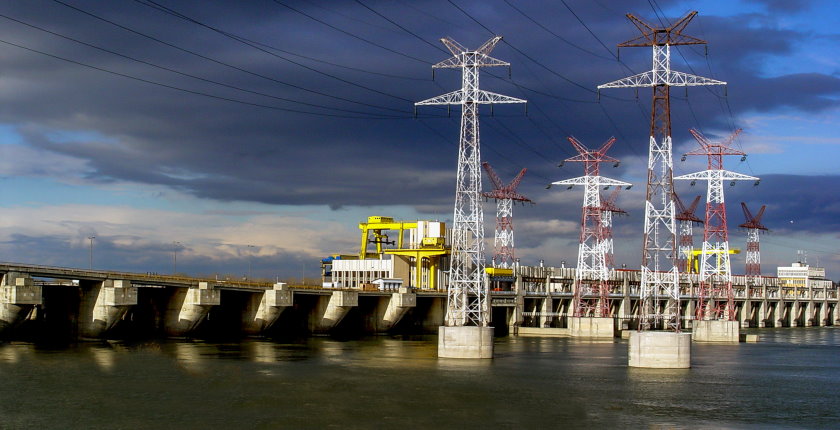
Photo: EPS
The water flow in Serbia’s hydropower system dropped by half in the past two months, which increases the need for electricity imports. However, volumes in reservoirs are low throughout Europe as well. Đerdap hydropower stations face a decrease in output this year of at least 30%.
The drought is taking its toll – the lack of rain in spring contributed to the drop in volumes in reservoirs of Serbia’s hydropower plants, and the persistent summer heatwave is making matters worse. After a series of outages last winter in coal power plants and mines run by state-owned Elektroprivreda Srbije (EPS), the government had to turn to emergency imports of electricity at market prices. The shortage was partly covered by boosting hydropower plant output.
Hydro reserves have been hitting record lows since then, as precipitation was extremely weak, too. The situation is similar at rivers and hydroelectric units in the rest of Europe, where Italy is among the worst hit countries. It translates to less hydropower everywhere, which pushes prices upward.
“Power imports this summer cover between 4.5% and 12% or 13% and we will surely be importing more during the winter, when consumption is higher, and we will also import coal,” Deputy Prime Minister of Serbia and Minister of Mining and Energy Zorana Mihajlović said. She cited drought as a factor that couldn’t be controlled, but also the delays in necessary preparations in EPS, adding that the utility needs time to get back on its feet.
The ministry said last month that Serbia imported 2.9 TWh of electricity since the beginning of the crisis in October, and that it cost EUR 650 million. However, the volume of gas in storage is at a record high, President Aleksandar Vučić said.
Đerdap hydropower plants are thirsty
EPS said the low water flow caused a 27% drop on an annual basis in hydropower plants, public broadcaster RTS reported. The flow is the weakest in the last ten years, and it has dropped by half just in the past two months, the media outlet added.
The reservoirs at the hydropower complex on the rivers of Drina and Lim are half empty
The Danube brings only two thousand cubic meters of water per second to the Đerdap hydropower plants. It is three times below the multiyear average. The system, which operates within EPS, normally covers a quarter of the country’s electricity consumption. The business unit’s management expects a fall in production of at least 30% this year.
The reservoirs at the hydropower complex on the rivers of Drina and Lim are half empty. They account for up to 12% of electricity in Serbia. Their output dropped by a third, according to the report.
European electric power system is at risk of collapse
Moreover, water is also necessary to cool thermal and nuclear power plants. France, which is the most dependent on nuclear energy, had to cut production because the rivers of Rhône and Garonne are too warm. There’s more: rivers are used to transport all sorts of goods, and currently there is a shortage of coal in all corners of the continent. For instance, also in the energy sector, there is a shortage of diesel and heating oil in Germany’s south.
The lack of rainfall also jeopardizes food production and cargo transportation as well as wildlife in rivers and around them
The Rhine is now so shallow that only the smallest freight ships can pass through. High temperatures in rivers jeopardize wildlife in the water and around them.
The situation is exceptionally serious also because of the inability to irrigate crops, affecting food production, and due to disruptions in the drinking water supply. Governments have been urging people to take shorter showers not only to save energy but water, too.
Norway has already cut production in hydropower plants to keep reservoir levels bearable and protect domestic electricity consumers, and now it is preparing measures for limiting power exports.


















Be the first one to comment on this article.